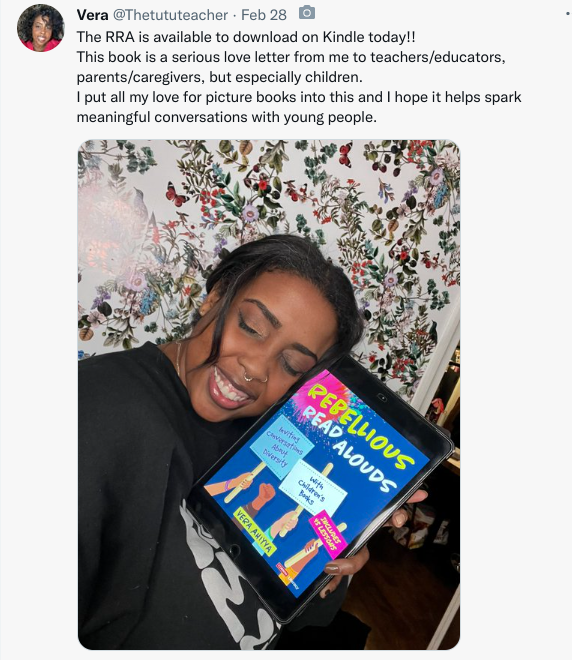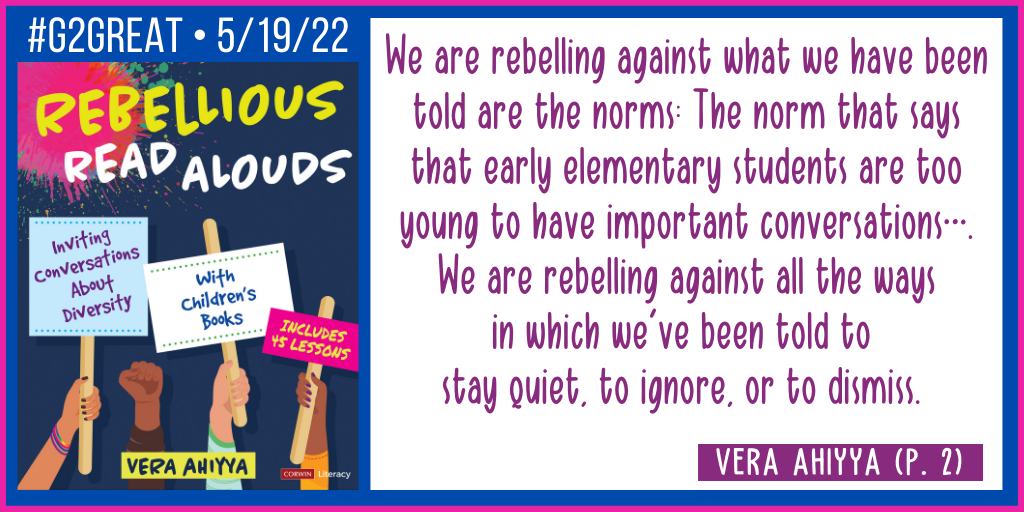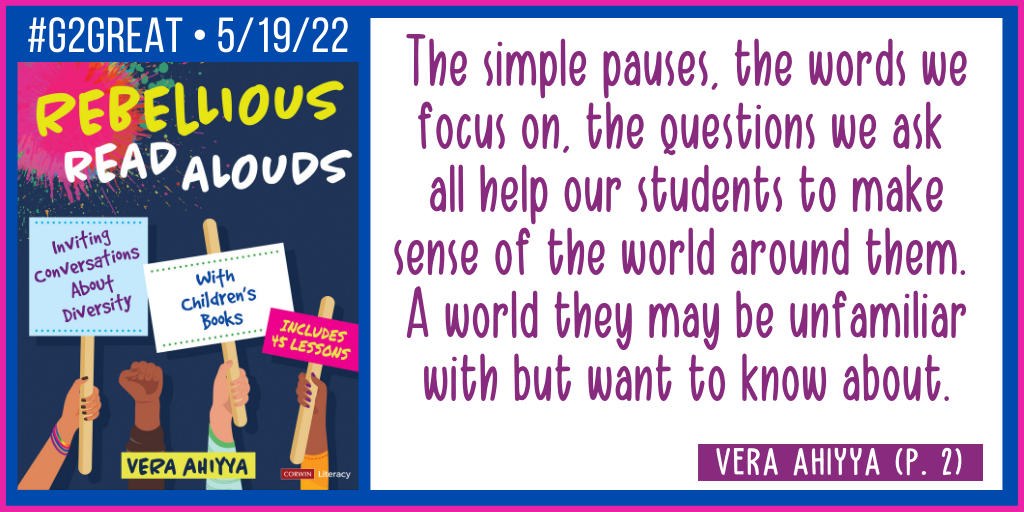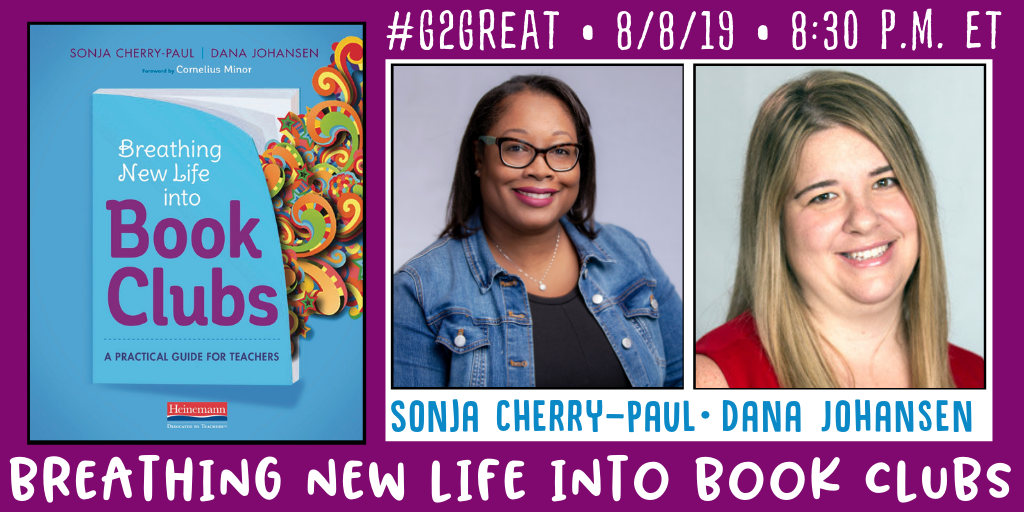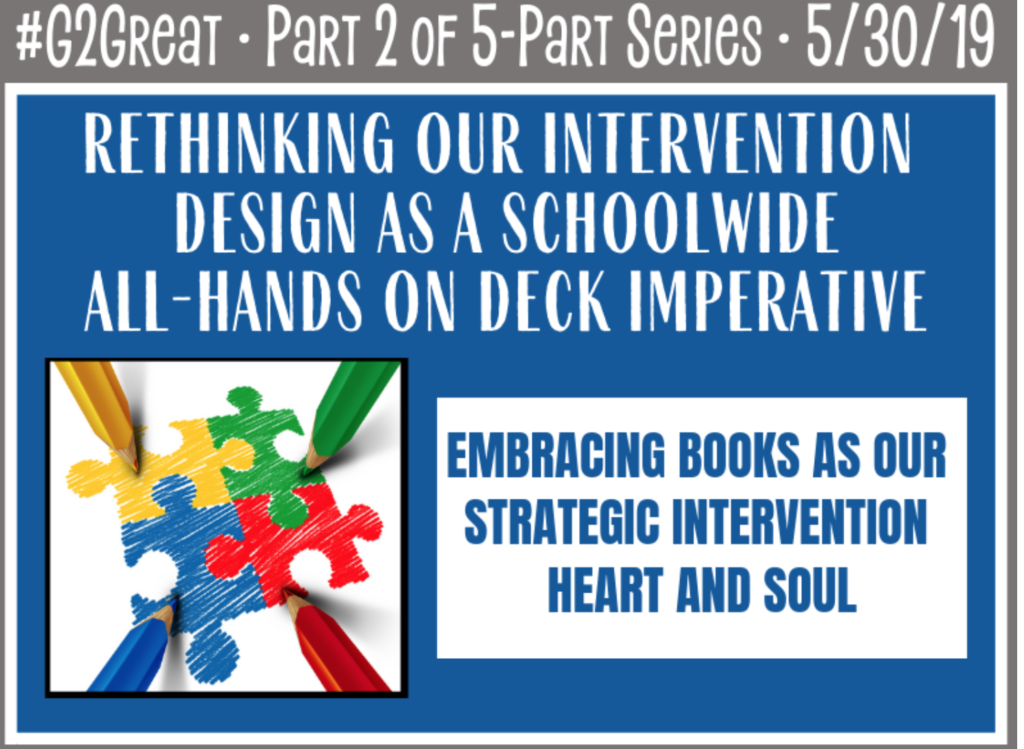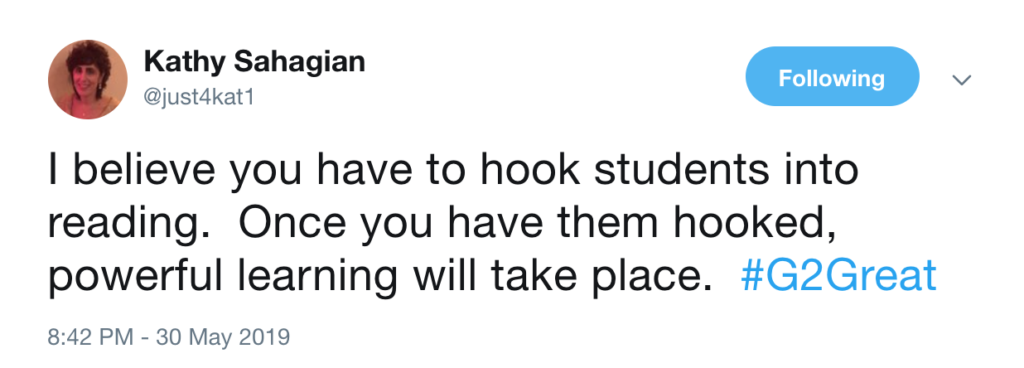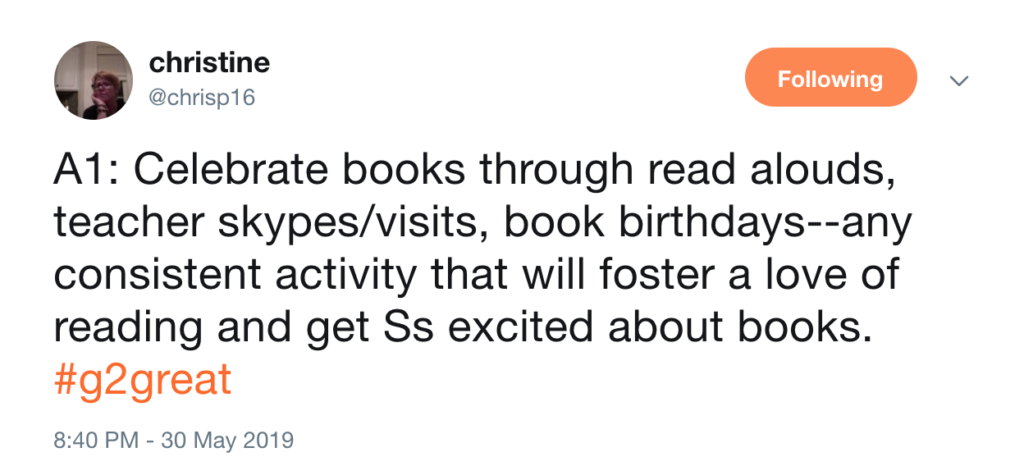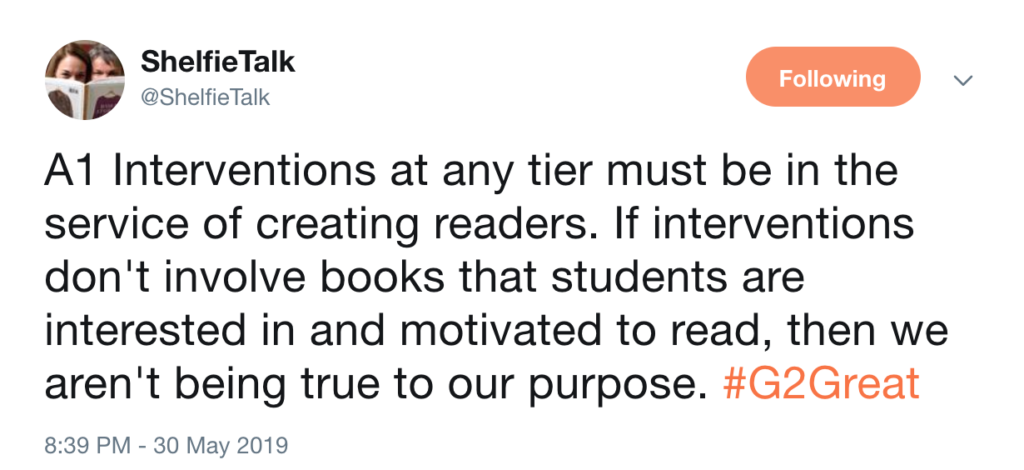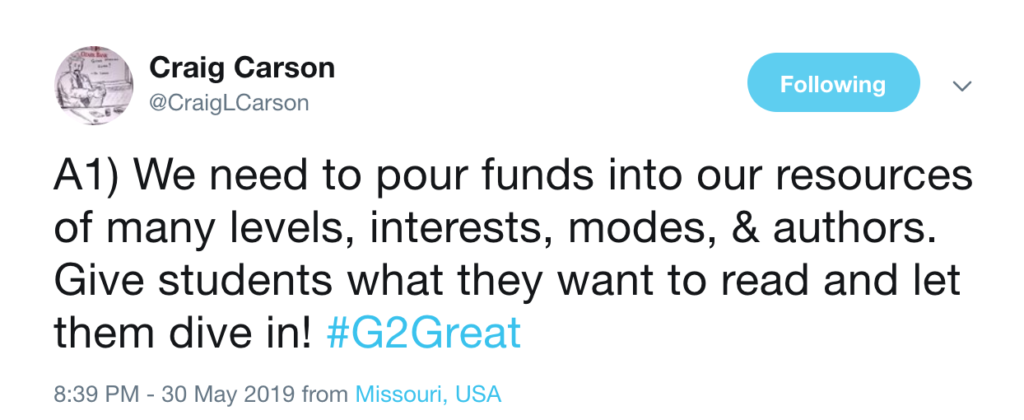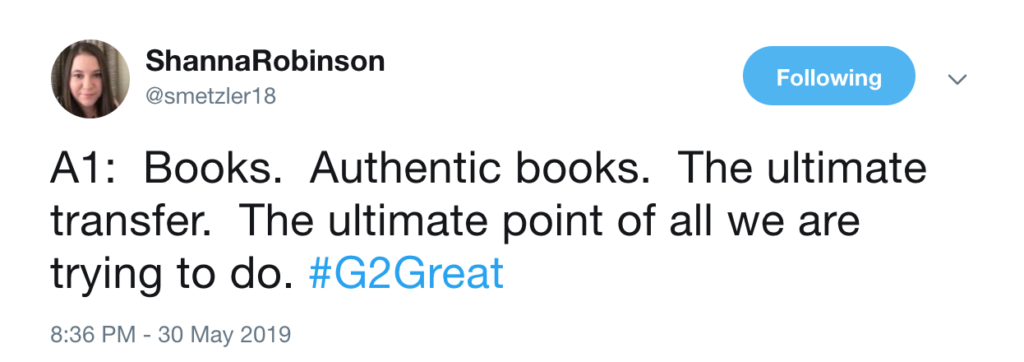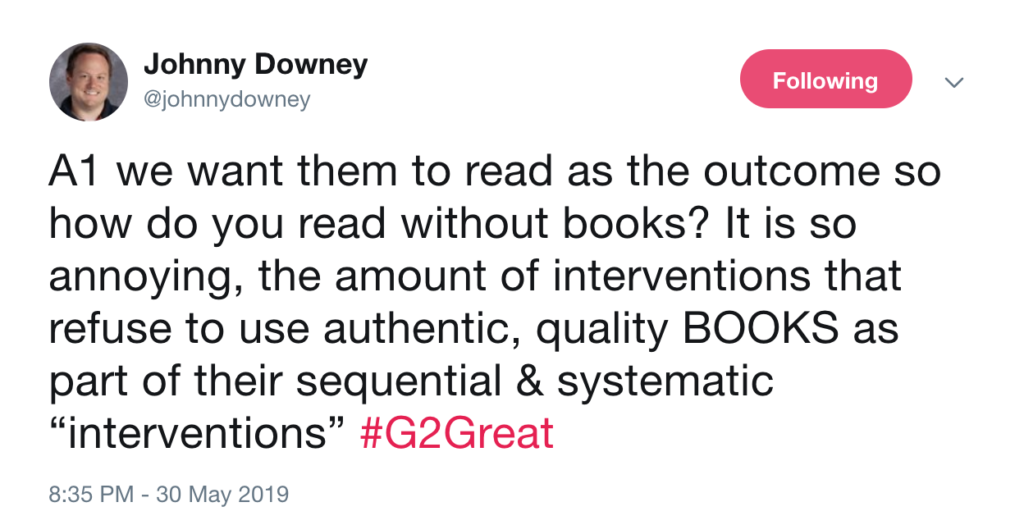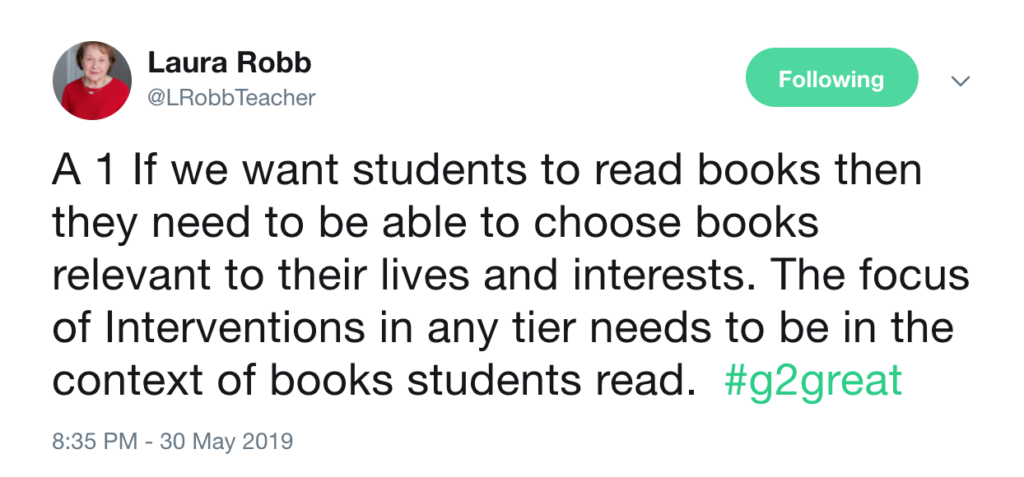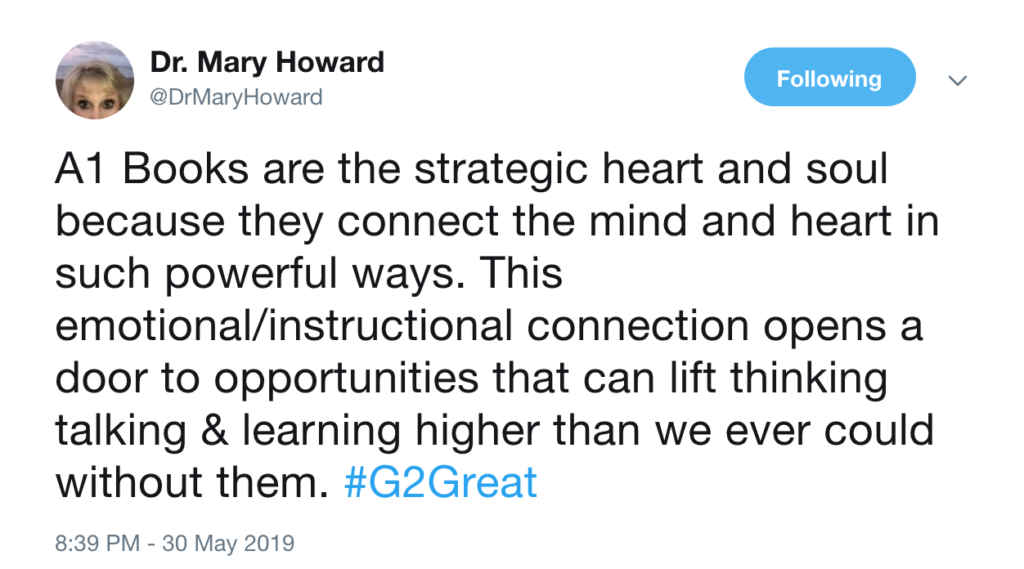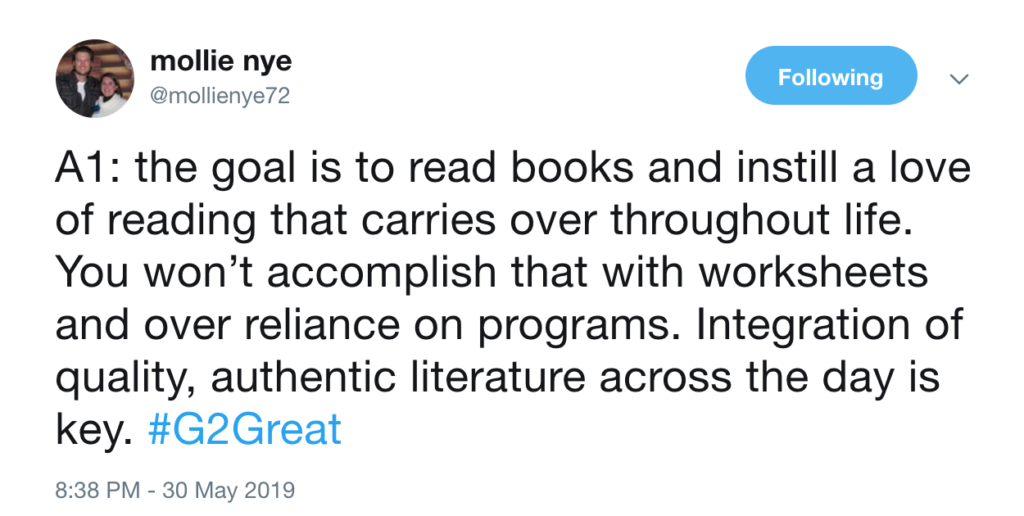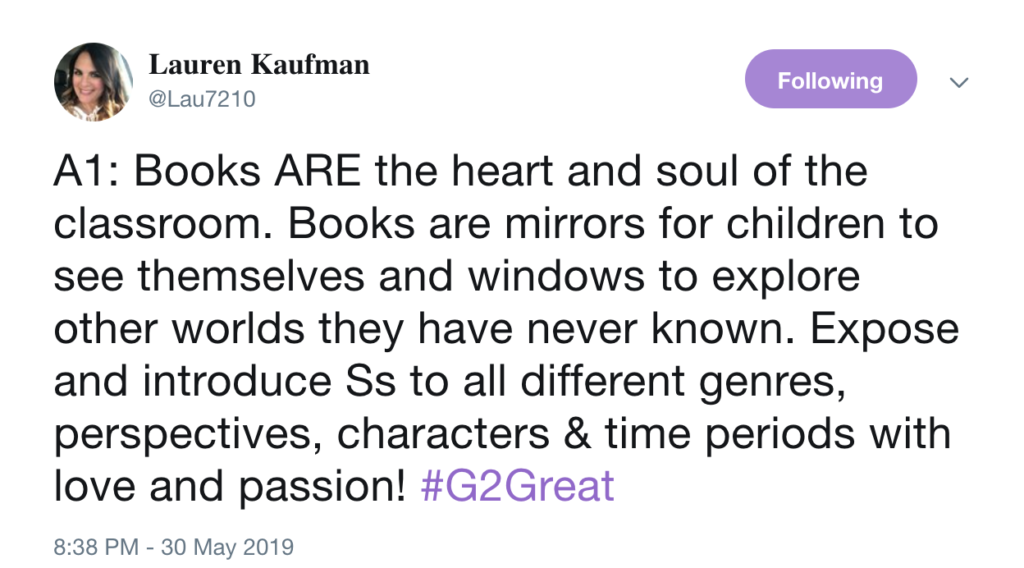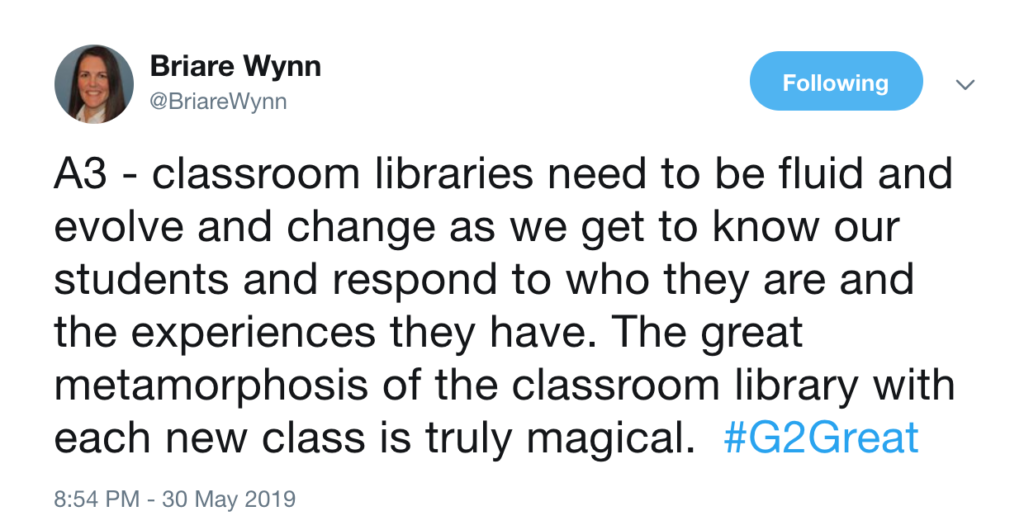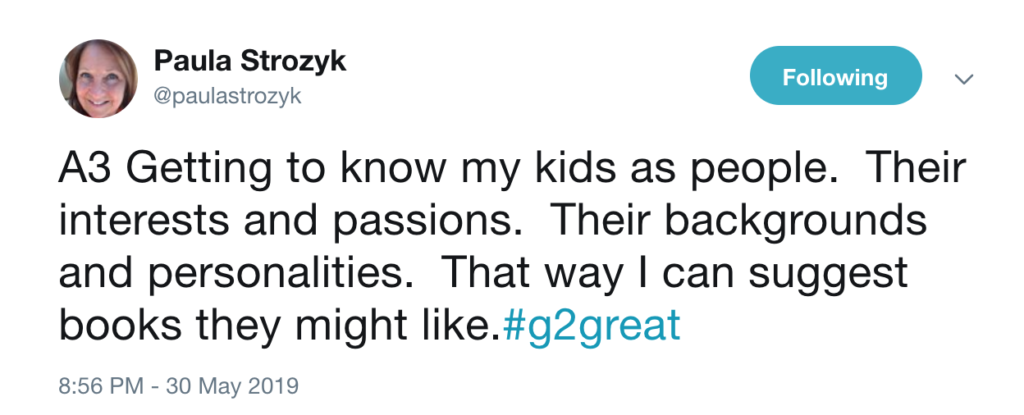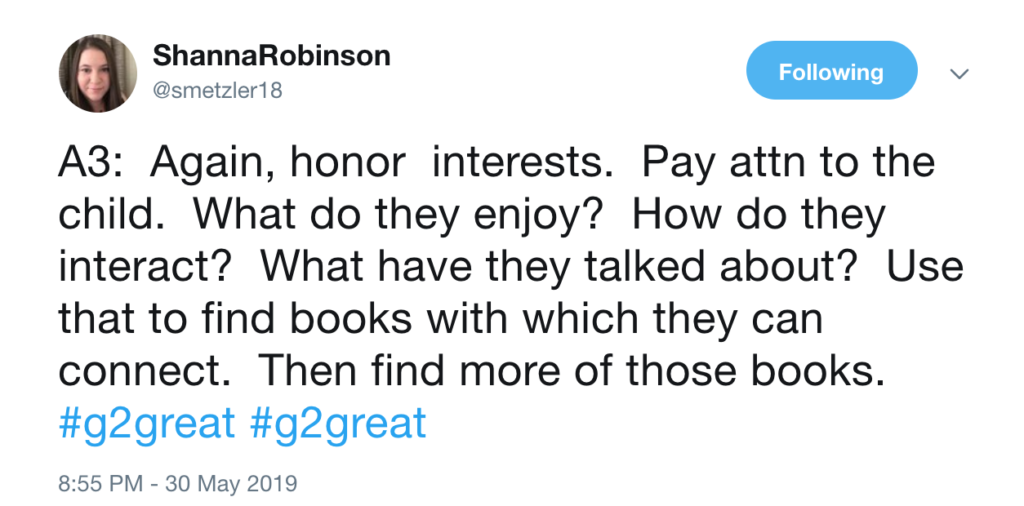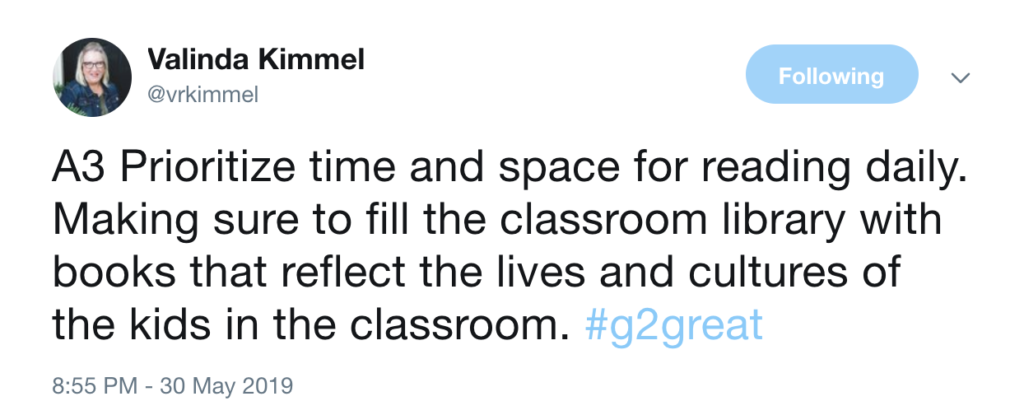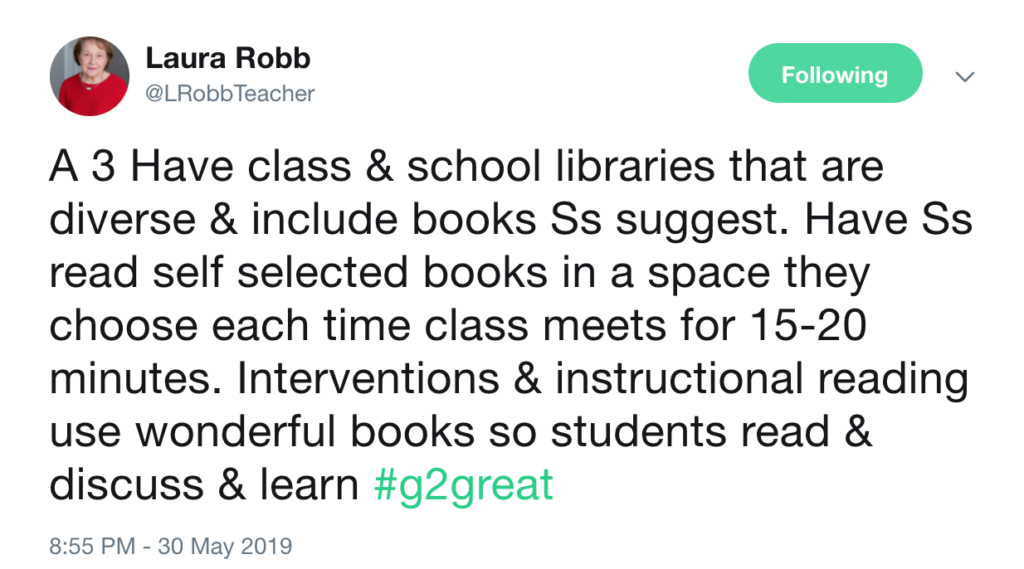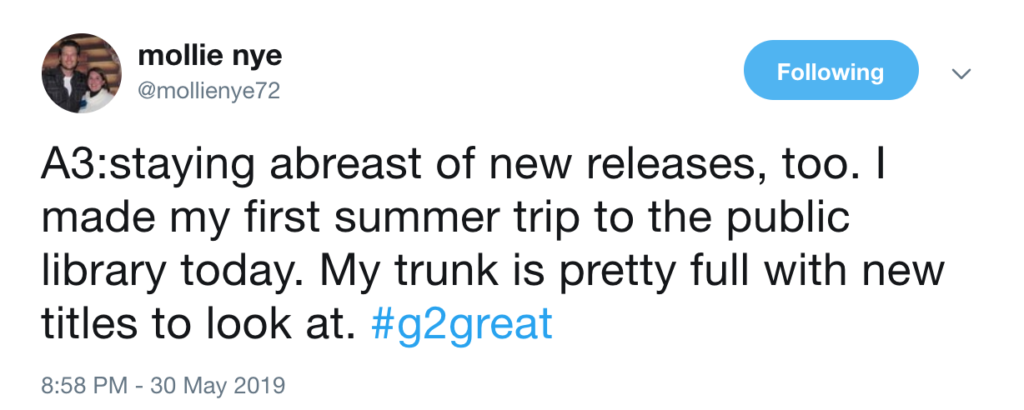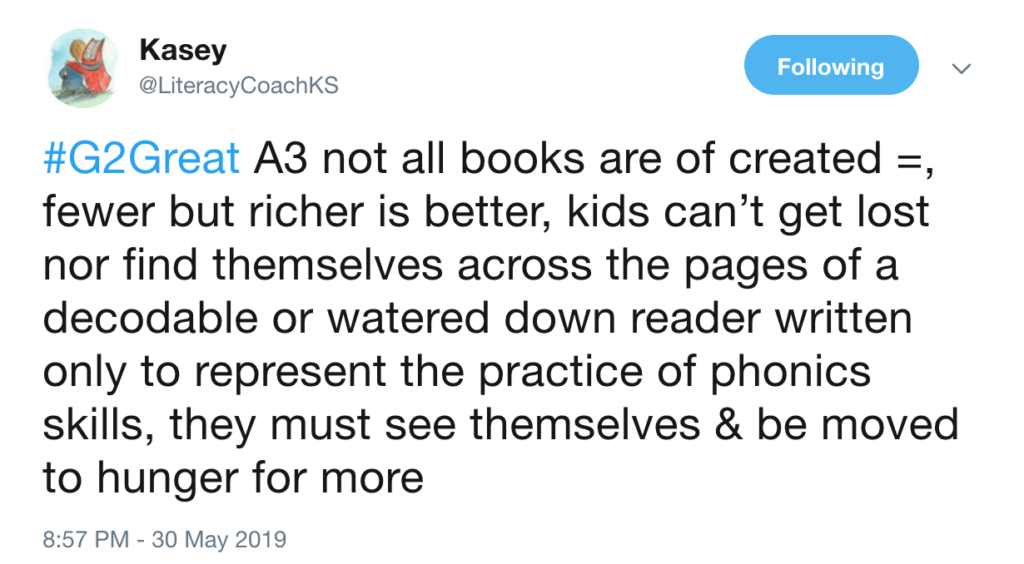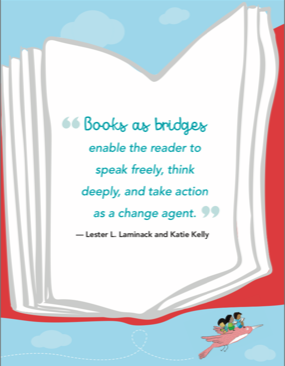
On Thursday, February 9, 2023, Carl Anderson joined the #G2Great chat to discuss his new book, A Teacher’s Guide to Mentor Texts Grades K-5. Carl is no stranger to #G2Great. Carl was with #G2Great in 2017 for How’s It Going? and 2018 for another Classroom Essentials text, A Teacher’s Guide to Writing Conferences K-8. This chat was also paired with last week’s chat with Penny Kittle’s Micro Mentor Text book for a two week focus on Mentor Texts. Check out Brent’s blog here for a recap of that chat.
Mentor texts.
I didn’t hear about them in undergrad or graduate school. My courses were pretty traditional as workshop type reading, writing, or play were not ever mentioned. So that first time I tried to write a review for a book in Amazon, I read several reviews. Probably close to a hundred. I then focused on five or six that I liked and tried to determine what I thought “worked”. That was then my goal. To write a review that would entice a reader (without boring them) and yet be both an invitation as well as a strong endorsement of the content, craft, and organization of the text. I’m still in the novice stage but I’ve leaned on a “process” for locating and using “mentor texts” in a variety of formats including that initial foray into Amazon reviews.
As I worked on this blog and tried out several drafts, I struggled with finding a focus or story that would carry me through. I kept going back to this book’s Table of Content in Heinemann’s series of Classroom Essentials. That framework became my mentor for this blog. It felt like cheating since that Table of Contents was written before I started the blog and that’s so NOT me. I’m not an outline writer BEFORE I write. I prefer to complete my outline at the conclusion of my writing so I can follow the path where my writing led. See if this makes sense to you, the reader, as you follow along this journey through Carl’s tweets, the Table of Contents, and additional writing resources.
What is a Mentor Text?
We began our chat by tweeting out our own definitions of mentor texts as well as looking at Carl’s definition. You can find even more details if you choose to preview the book through this sample chapter 1 available free at the Heinemann website here.
Here is what Carl said:



Reading Like a Writer
Carl’s thoughts about mentor texts and reading like a writer are succint.

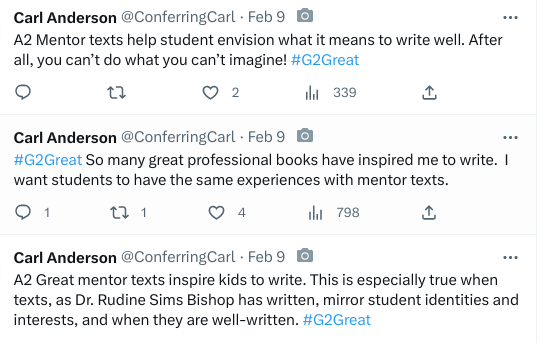
Reading and Writing are interconnected. Some view them as intertwined processes. Others view them as complementary pathways. It’s important that authors write like readers and that readers read like writers as further explained by the Braintrust Tutors here. NCTE also cites research on the connectedness of reading and writing in Lisa Fink’s blog here. And Colleen Cruz lists the following reciprocal moves in this edweek article that encourages us to consider the power of writing in order to strengthen reading.
C. Cruz, Edweek, 2020.
- “Show-not-tell in writing helps readers to infer in reading.
- Plotting in writing helps readers to make predictions in reading.
- Developing objects as symbols in writing helps readers interpret symbols in reading.
- Defining a word in writing helps readers to understand the meaning of an unknown word.”
And of course, mentor texts provide inspiring models that are the “keys to the kingdom” as Carl’s first tweet in this section said! Have you ever said to yourself, “I wish I had said that” or “I wish I had written that”? That’s the role of fabulous mentor texts.
Steps to Using Mentor Texts Well
This graphic from Melanie Meehan and The Responsive Writing Teacher with Kelsey Sorum is a favorite of mine.

It’s a favorite for me because I can use it with teachers as they identify craft moves in text, and I can also use it with students as they identify craft moves that they want to explore in their own writing. What a win/win for multiple audience use. Carl’s five steps are very similar.
Step 1: Find Your Own Mentor Texts

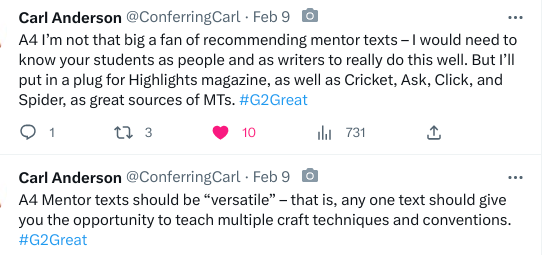
Who are your mentor authors? What texts do you use? Where do you find mentor texts? Encourage students to find their mentor texts.
Step 2: Get to Know Your Mentor Texts

Study Them. Identify the craft moves. Mark them up. Collaborate with peers. Encourage students and teachers to find published mentors as well as personal mentor texts.
Step 3: Immerse Students in Mentor Texts


Provide choices. Let students choose the mentor texts that spark their own ideas and connections. Make sure students do the work!
Step 4: Lead Whole-Class Text Study

Check out these resources. Teach students how to “mine text” for mentors.
Step 5: Teach with Mentor Texts


Choose examples that are familiar to students. Encourage students to “spread their wings and soar!
In conclusion, mentor texts are valuable for both readers and writers. Capitalize on the power of mentor text as your read like authors to explore the many mentor texts available whether you choose micro texts like the examples from Penny Kittle or some of the examples listed in the wakelet from our chat with Carl Anderson. Your readers AND writers will benefit from their study and use of mentor texts.

_ _ _ _ _ _ _ _ _ _ _ _ _ _ _ _ _
Additional Resources:


